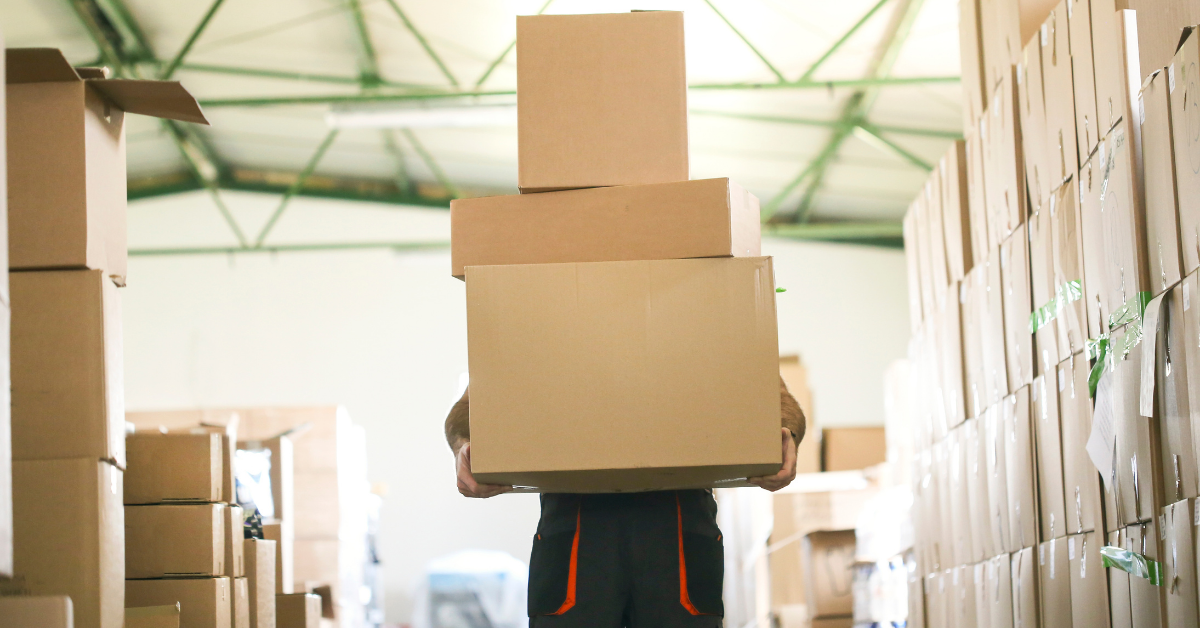Improper Lifting Techniques and Back Pain
65 million Americans report a recent episode of back pain and about 16 million adults experience chronic back pain that negatively impacts their daily activities. Back pain is the sixth most costly condition in the US, the leading cause of work limitations and workdays lost. The most common cause of back pain is back strains and sprains. A back sprain is an injury to the ligament that connects two bones. A back strain involves injury to the muscle or the tendon which attaches the muscle to the bone. Back sprains and strains can be caused by lifting something too heavy or not lifting an object properly. The following 11 tips can help you protect your back whether you are lifting something at home or work.
Plan Ahead
Make sure you think before you start moving. Evaluate how large or small the object is and whether help may be needed. Clear the path you will carry the load through before lifting the object. Planning for all these factors will help you execute a successful and safe lift.
Position Yourself and Hold the Object Close to Your Body
Lifting and carrying objects close to you will feel easier and put less strain on your back.
Wide Stance
Keep your feet shoulder-width apart and if possible, stagger your feet with one foot slightly in front of the other. This strategy will improve your balance and control and gives you more ability to move your feet instead of your back.
Maintain Your Normal Spinal Alignment
Keep your back straight which will maintain your normal spinal alignment. Maintaining a neutral spine prevents excessive straining of structures located in your low back.
Bend Your Hips and Knees
Don’t bend your back to lift the object. Bending at your hips and knees will lower your center of mass which will provide you more stability during your lift. Furthermore, this action will encourage you to maintain a straight back.
Allow Your Larger Muscles to do the Work
The muscles of your lower body are the largest in your body. These muscles are designed to produce much more force and power in comparison to your back and upper body muscles. Use the abilities of these muscles to your advantage during your lift.
Engage Your Trunk Muscles Before Lifting
Engaging your abdominal and back muscles before lifting provides stability proximally which allows more mobility for your legs and protects your back during the lift.
Avoid Twisting Your Back
Moving your feet instead of twisting your back places less strain on your spine.
If You Must, Push Rather than Pull
Pushing an object allows you to have a larger base of support and lowers your center of mass to provide more stability. In a pushing position, you can use your lower body muscles which provides you more power in the desired direction.
Don’t go at it alone
Asking for help from another person or using equipment is a good way to protect yourself and your back from injury and unnecessary strain.
Take a Break
When you feel fatigued, properly set down the load and rest. Being fatigued could increase your chance of not performing proper lifting techniques which increases your risk for back pain. If you are lifting objects frequently or lifting heavy objects at work, implement schedule rest breaks to prevent fatigue.
Future back pain could be prevented if you perform proper lifting techniques and take the necessary precautions while lifting heavy objects. Back pain can impede your life and lead to decreased independence whether it’s at work or home. Live Your Life offers a variety of services that can help you maintain your health and independence. Click here to learn more about the services provided by Live Your Life and to contact us for a free consultation.
References
- Shirley, Lee, and Susan Rogers. “Chronic Back Pain”. Health Policy Institute. Georgetown University. 13 Feb. 2019, https://hpi.georgetown.edu/backpain/#:~:text=Nearly%2065%20million%20Americans%20report,condition%20in%20the%20United%20States.
- “Sprains”. Mayo Clinic. 25 Sept. 2020, https://www.mayoclinic.org/diseases-conditions/sprains/symptoms-causes/syc-20377938#:~:text=The%20difference%20between%20a%20sprain,a%20muscle%20to%20a%20bone.
- “Low Back Pain: Causes, Diagnosis & Treatments”. Cleveland Clinic. https://my.clevelandclinic.org/health/diseases/7936-lower-back-pain#:~:text=Strains%20and%20sprains%3A%20Back%20strains,coughing%2C%20twisting%20or%20bending%20over. Accessed 26 Aug. 2022.
- “Lifting and Material Handling”. Environment, Health, and Safety. The University of North Carolina at Chapel Hill. 15 Feb. 2021, https://ehs.unc.edu/workplace-safety/ergonomics/lifting/.
What makes us different? Our care comes to you!
View Our Service AreaWe Are A Comprehensive Mobile Company Focused on Wellness, Fitness, Rehabilitation, and Prevention
We specialize in transforming the lives of seniors, adults and teenagers with a wide array of diagnoses and conditions in their home or location of choice. You deserve to be your best self through good health and wellness. We would love to have the privilege to work with you or a loved one.
Request a FREE Consultation Today!
